Lincoln Nautilus: Body Closures / Liftgate Alignment. General Procedures
Inspection
NOTE:
Removal steps in this procedure may contain installation details.
-
Check liftgate-to-body dimensions.
Refer to: Body and Frame (501-26 Body Repairs - Vehicle Specific Information and Tolerance Checks, Description and Operation).
Adjustment
All alignments
-
Open the liftgate.
-
If equipped.
Remove the load compartment cover.
-
Remove the load compartment floor cover.
-
If equipped.
Remove the spare tire cover.
-
On both sides.
Remove the tie down hooks.
-
Open the retainer cover.
-
Remove the retainers.
-
Remove the tie down hook.
-
Remove the load compartment scuff plate trim panel pin-type retainers.
-
Release the clips and remove the load compartment scuff plate trim panel.
-
Remove the liftgate striker.
Torque:
177 lb.in (20 Nm)
Liftgate left and right, up and down alignment
-
Loosen the bolts enough to permit movement of the liftgate.
-
Close the liftgate.
-
Adjust the liftgate to specification.
Refer to: Body and Frame (501-26 Body Repairs - Vehicle Specific Information and Tolerance Checks, Description and Operation).
-
Open the liftgate.
-
Tighten the bolts.
Torque:
22 lb.ft (30 Nm)
Liftgate in and out alignment
-
Lower the headliner.
Refer to: Headliner - Lowering (501-05 Interior Trim and Ornamentation)
.
-
Loosen the nuts.
-
NOTE:
Nominal overslam bumpers have a small lip and should be adjusted flush with the sheet metal surface.
Adjust the nominal overslam bumpers.
-
Close the liftgate.
-
Adjust the liftgate to specification.
Refer to: Body and Frame (501-26 Body Repairs - Vehicle Specific Information and Tolerance Checks, Description and Operation).
-
Carefully open the liftgate.
-
Tighten the nuts.
Torque:
46 lb.ft (62.5 Nm)
All alignments
-
Install the liftgate striker.
-
Close the liftgate.
-
Inspect the body-to-liftgate door dimensions.
Refer to: Body and Frame (501-26 Body Repairs - Vehicle Specific Information and Tolerance Checks, Description and Operation).
-
Install the removed components.
-
If equipped.
Carry out the power liftgate initialization.
Refer to: Power Liftgate Initialization (501-03 Body Closures, General Procedures).
Inspection
NOTE:
Removal steps in this procedure may contain installation details.
Inspect the hood-to-body dimensions.
Refer to: Body and Frame (501-26 Body Repairs - Vehicle Specific Information and Tolerance Checks, Description and Operation)...
Initialization
Disconnect the battery or remove the RGTM fuse(s).
Refer to: Battery Disconnect and Connect (414-01 Battery, Mounting and Cables, General Procedures)...
Other information:
System Diagram
Item
Description
1
PCM
2
BCM
3
Direct Current/Alternating Current (DC/AC) Inverter
4
A/C Power Outlet Socket
System Operation
Network Message Chart
Broadcast Message
Originating Module
Message Purpose
Power pack torque status
PCM
Used to dete..
Special Tool(s) /
General Equipment
100-002
(TOOL-4201-C)
Holding Fixture with Dial Indicator Gauge
Inspection
NOTE:
Driveline vibration exhibits a higher frequency and lower
amplitude then high-speed shake. Driveline vibration is directly related
to the speed of the vehicle and is noticed at various speeds. Driveline
vibration can be perceived as a tremor in the floorpan or h..
Categories
WARNING: If the tire pressure
monitor sensor becomes damaged it may
not function.
Note: The use of tire sealant may damage
your tire pressure monitoring system and
should only be used in roadside
emergencies. If you must use a sealant, use
the Tire Mobility Kit sealant. Replace the tire
pressure monitoring system sensor and
valve stem on the wheel by an authorized
dealer after use of the sealant.
Note: The tire pressure monitoring system
indicator light will illuminate when the spare
tire is in use. To restore the full function of
the monitoring system, all road wheels
equipped with tire pressure monitoring
sensors must be mounted on the vehicle.
If you get a flat tire while driving, do not apply
the brake hea
read more

.jpg)
.jpg)
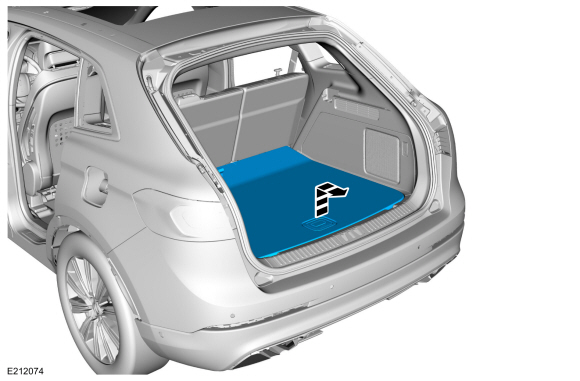
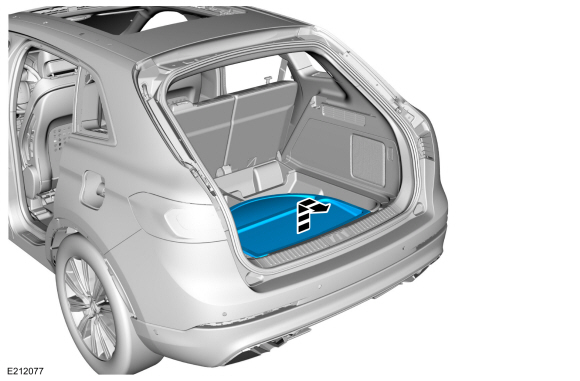
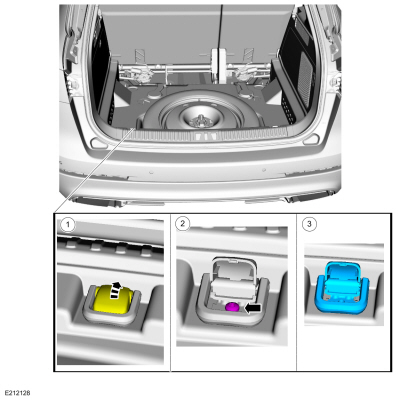


.jpg)
.jpg)
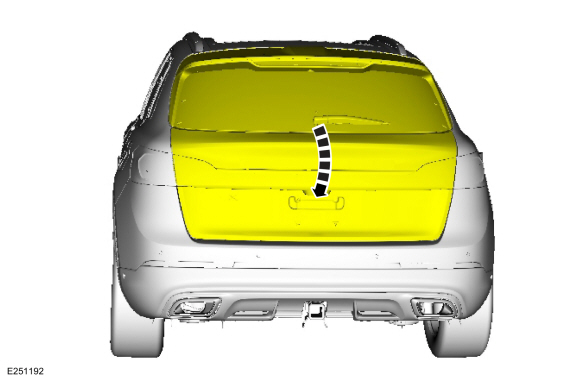
.jpg)
.jpg)
.jpg)
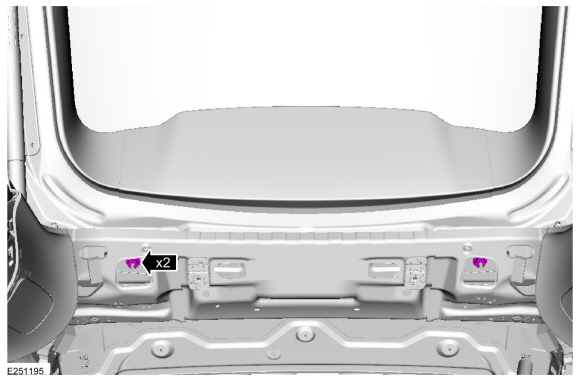
.jpg)

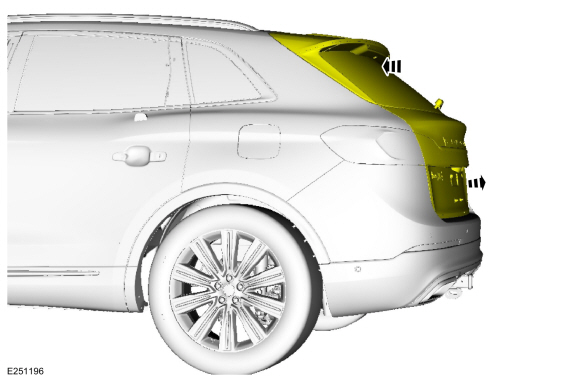
.jpg)

.jpg)


 Hood Alignment. General Procedures
Hood Alignment. General Procedures Power Liftgate Initialization. General Procedures
Power Liftgate Initialization. General Procedures